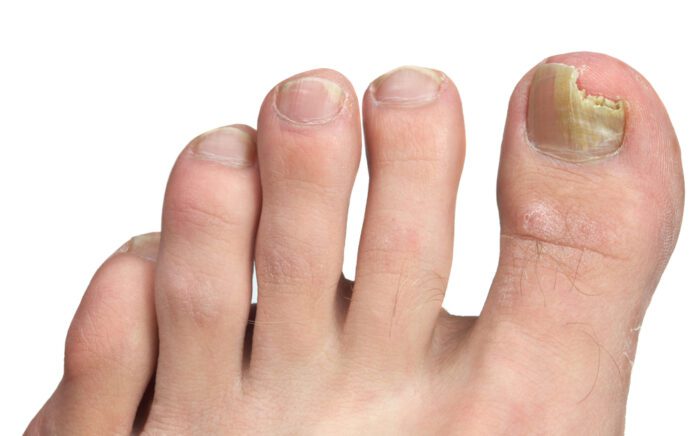Overview Of Fungal Nail Infections
Fungal nail infection is a fungus growing in and around your fingernail or toenail.
Commonly Associated With
Nails – fungal infection; Onychomycosis; Tinea unguium
Causes Of Fungal Nail Infections
Fungi can live on the dead tissues of the hair, nails, and outer skin layers.
Common infections include:
- Athlete’s foot
- Jock itch
- Ringworm on the skin of the body or head
- These infections often start after a fungal infection on the feet. They occur more often in toenails than in fingernails. And they are most often seen in adults as they age.
You are at higher risk of getting a fungal nail infection if you have any of the following:
- Diabetes
- Peripheral vascular disease
- Peripheral neuropathies
- Minor skin or nail injuries
- Deformed nail or nail disease
- Moist skin for a long time
- Immune system problems
- Family history
- Wear footwear that does not allow air to reach your feet
Symptoms Of Fungal Nail Infections
Symptoms include nail changes on one or more nails (usually toenails), such as:
- Brittleness
- Change in nail shape
- Crumbling of the outside edges of the nail
- Debris trapped under the nail
- Loosening or lifting up of the nail
- Loss of luster and shine on the nail surface
- Thickening of the nail
- White or yellow streaks on the side of the nail
Exams & Tests
Your health care provider will look at your nails to find out if you have an infection.
The diagnosis can be confirmed by looking at scrapings from the nail under a microscope. This can help determine the type of fungus. Samples can also be sent to a lab for a culture. (Results may take 4 to 6 weeks.)
Treatment Of Fungal Nail Infections
Over-the-counter creams and ointments usually do not help treat this condition.
Prescription antifungal medicines that you take by mouth may help clear the fungus.
You will need to take the medicine for about 2 to 3 months for toenails; a shorter time for fingernails.
Your provider will do lab tests to check for liver damage while you are taking these medicines.
Laser treatments may sometimes get rid of the fungus in the nails. This is less effective than medicines.
In some cases, you may need to have the nail removed.



